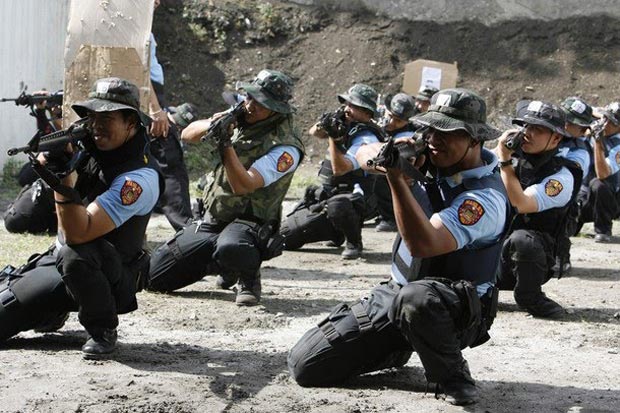ON DECEMBER 30, 2000, the citizens of Metro Manila witnessed the city’s worst terrorist attack to date.
Twenty-two people died and hundreds were injured as the Mindanao conflict, seen as distant by many in the metropolis, literally exploded into the urban scene: five different places across the Metro were bombed within the span of an hour.
More than ten years after the infamous Rizal Day bombings, what has changed?
Dark times
The first few years of the previous decade were dark times for the country, as terrorist attacks escalated and filled the headlines.
Unlike before, Manila was no longer the safe sanctuary a reality away from Mindanao; instead, it was the new prime target for the country’s terrorists. The terrorist group, Abu Sayyaf, was then at the height of its strength, claiming over 2,000 members.
In addition, the country also got embroiled in the Bush-led War on Terror. While the Middle Eastern operations were in full motion, local terrorist attacks constantly occurred, accompanied by high-profile kidnappings of foreign tourists.
With the recent death of Osama bin Laden, the whole world was able to let out a timely sigh of relief. However, as most attempts to address fears over continued extremist attacks have proven to be fleeting measures, the Philippines is still on its war against terror. This does not mean, though, that nothing has changed since the Rizal Day bombings.
“Nagpapakilala pa lang [ang Abu Sayyaf] noon (The [Abu Sayyaf] were merely introducing themselves at that time),” Jennifer Santiago-Oreta of the Political Science Department says about the attacks. “They were flexing their muscle—showing that if they could strike Manila, the seat of power, what more for any other place in the country?”
Heightened security
The Philippine security sector can only go so far, though.
“Wooden sticks [used to poke inside bags], as opposed to sophisticated detectors, make me feel the lack of safety and fear [the ineffectiveness of] the Philippines’ security standards,” says junior Lexie Coloma, decrying the lax security within establishments in Manila.
Coloma’s feeling of anxiety mirrors many of her countrymen’s, even after public and private establishments attempted to improve their security systems following the Rizal Day attacks.
“[The problem is that we] have a security sector that is incapable of making the people feel secure, so now… the perception of insecurity [is heightened],” says Oreta. Malls, for example, feel the need to hire private security details instead of leaving policing and public safety duties to the state.
In light of the attacks, the Light Rail Transit Authority also stepped up security protocols, such as by imposing compulsory bag inspections—a practice now also prevalent among malls and other public establishments. Manila’s railways are one of the few railway systems that conduct bag checks. While beneficial from a security standpoint, it results in long queues, betraying the concept of a rapid transit system.
Despite this, the security measures seem to have worked. From 2000 to 2005, there were 11 bombings in the Metro Manila area, compared to three from 2006 to 2011—two of which, the Batasan blast and the Glorietta blast, aren’t even officially acknowledged as terror attacks.
Oreta attributes the lull in terrorist acts to a variety of factors, including “the death of Abu Sayyaf’s leaders and the army’s relative success in fighting the rebels in Mindanao itself, [preventing a spillover to Metro Manila].”
Revisiting Mindanao
However, while Metro Manila seems to have escaped the brunt of terrorist attacks recently, the same cannot be said for Mindanao. Being on the front line in the war against terror, Mindanao has seen about 37 terror incidents in the last five years, mostly in Sulu, Davao and Zamboanga.
According to Oreta, though, “terrorism” is a problematic classification for many of these occurrences, saying that “the conflict dynamics [in Mindanao] is already so convoluted.”
“We’re not sure which is a terror attack—pure and simple—and which ones are influenced by rido [family feud] or ideological [conflicts], or a combination.”
Preparing for the worst
So are we in the Metro truly safe from terror attacks? Oreta answers with “no.”
“Say something happens in the peace talks. There is always the possibility that they might do something in crowded places… Sometimes you just [have to avoid] going there.” But then she adds, “Compared to Mindanao, it is still safer here.”
To think that our country is slowly inching its way towards freedom from terror is a hopeful thought. Until that happens, though, wooden sticks can only do so much—Filipinos need to keep their guards up without relying too much on anything other than their own precautions.




